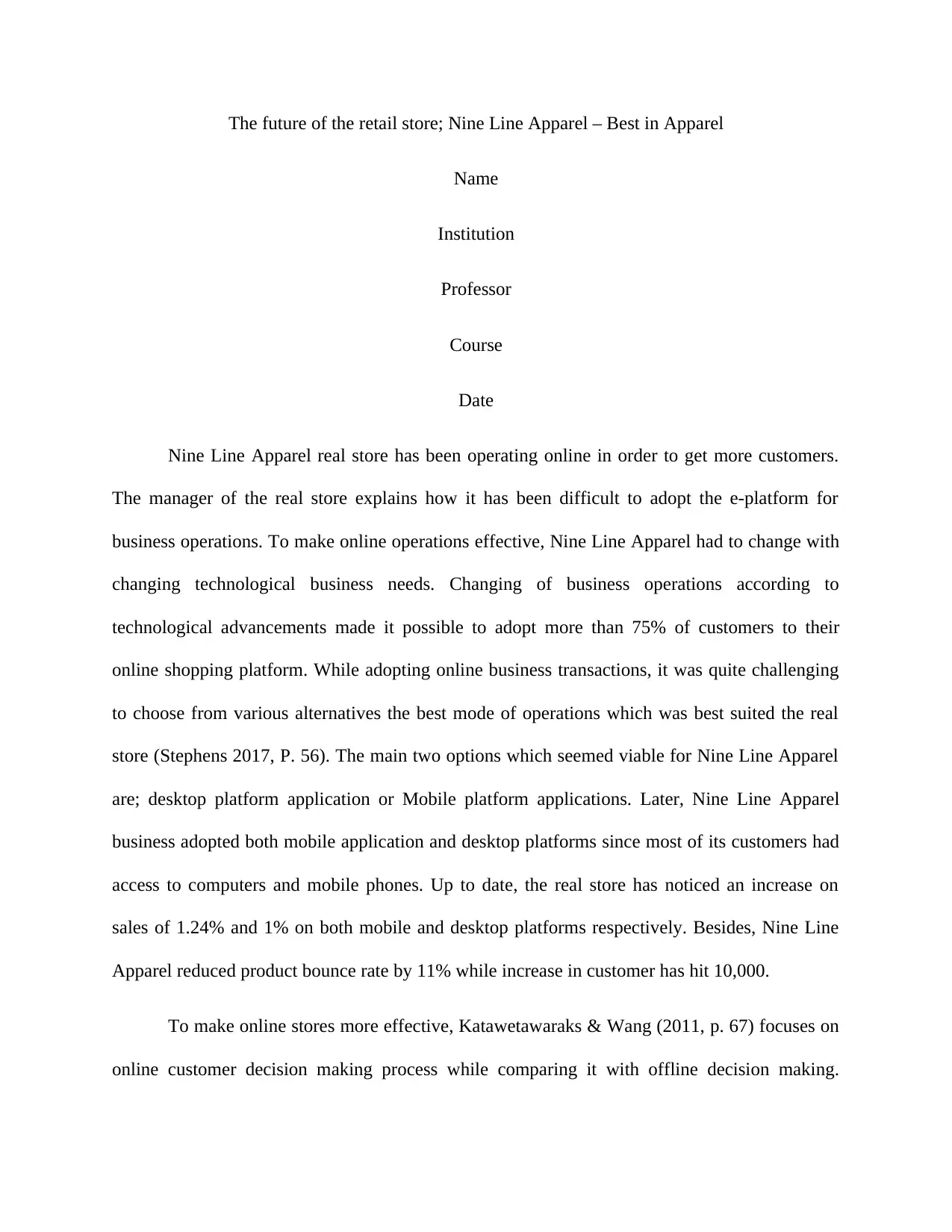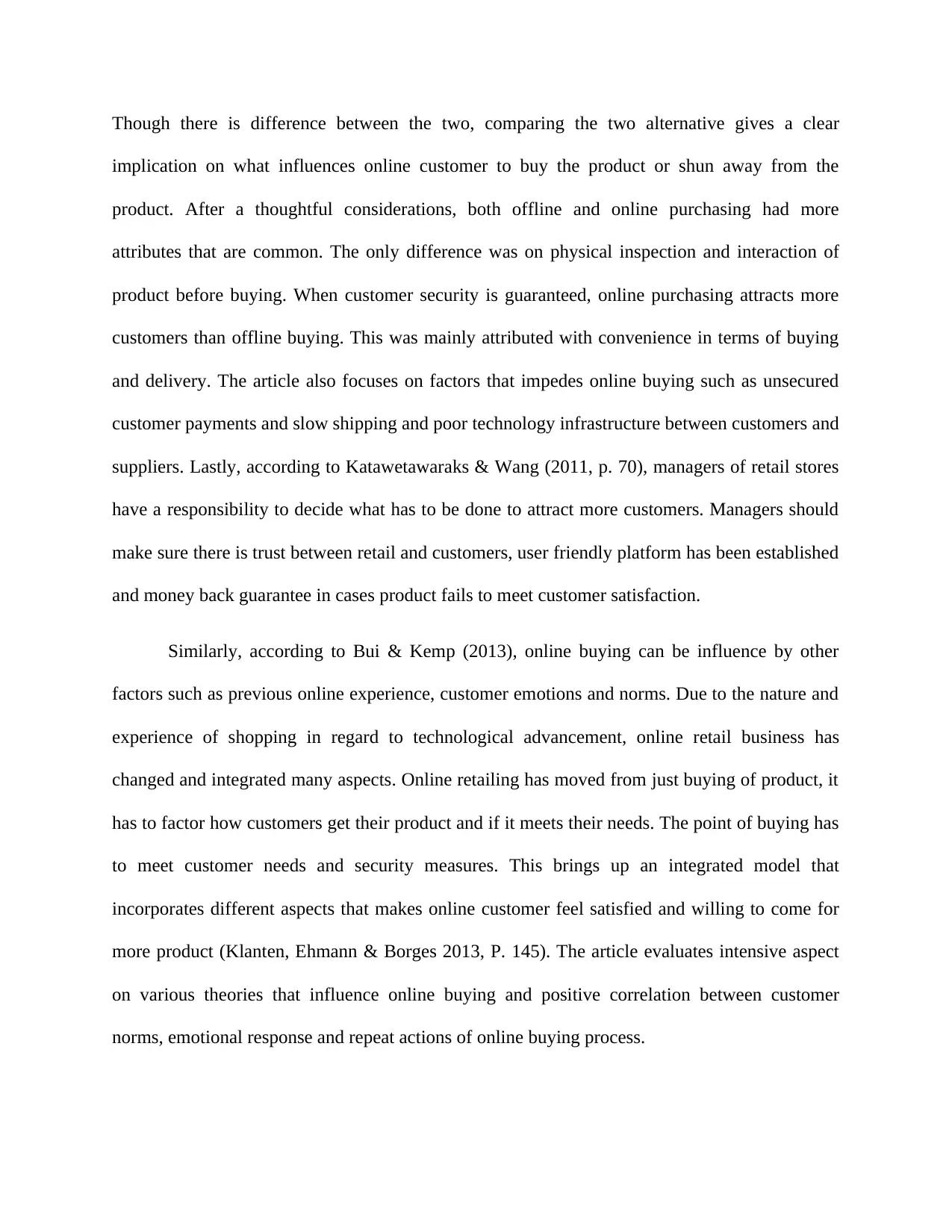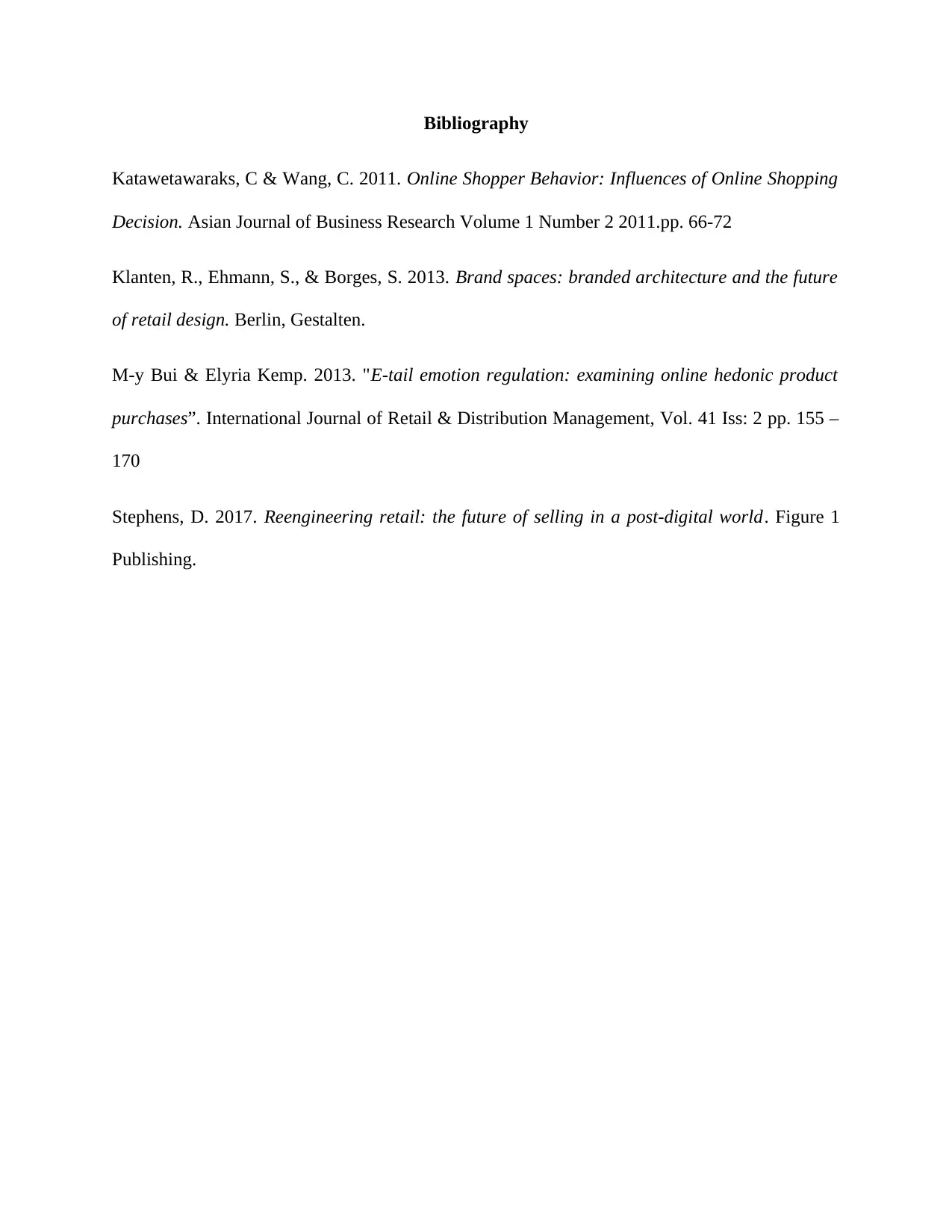Nine Line Apparel: A Case Study on the Future of Retail Stores
VerifiedAdded on 2020/04/07
|3
|719
|53
Report
AI Summary
This report examines the future of retail, using Nine Line Apparel as a case study. The analysis focuses on the company's transition to online platforms, exploring the challenges and successes of adopting e-commerce. It highlights the importance of adapting to changing technological business needs and the impact of mobile and desktop applications on sales and customer engagement. The report also delves into online customer decision-making processes, comparing them with offline purchasing behaviors and identifying factors that influence customer choices, such as trust, user-friendly platforms, and security. Additionally, it discusses the influence of customer emotions, previous online experiences, and norms on online buying behavior, emphasizing the integration of various aspects to enhance customer satisfaction and loyalty. The report draws on several sources to provide a comprehensive overview of the evolving retail landscape and the strategies needed to thrive in a post-digital world.
1 out of 3










![[object Object]](/_next/static/media/star-bottom.7253800d.svg)